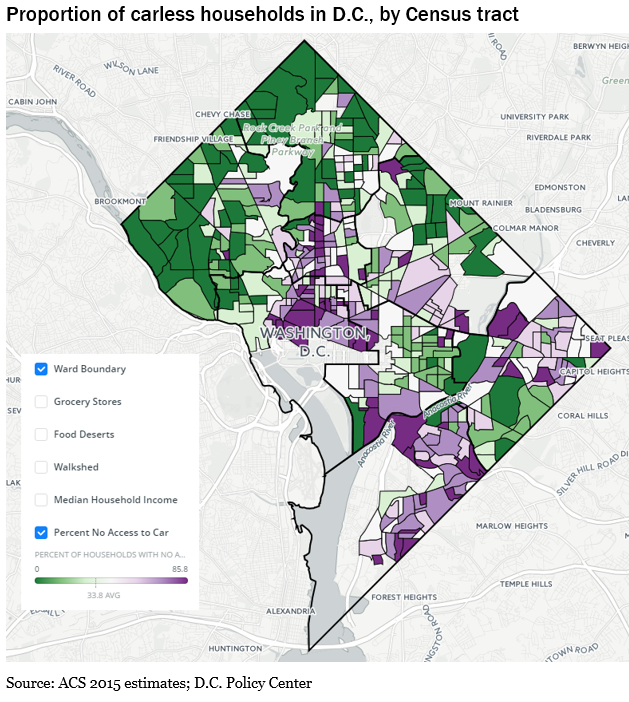On March 17th, WUSA Channel 9 featured D.C. Policy Center fellow Randy Smith’s new study on food deserts:
A new report by the D.C. Policy Center indicates that communities east of the Anacostia River are far more likely to live in a “food desert,” than their counterparts on the west side.
The report found that approximately 11 percent of the city is what’s considered a “food desert,” although the overwhelming majority of these communities are in Wards 7 and 8, on the east side of the river.
“We’ve seen shifts toward the east of the river once again,” said Yesim Taylor, the executive director for the center.
The study defined a food desert as a place that fit three main criteria:
- The walking distance to a supermarket or grocery store is more than 0.5 miles.
- Over 40 percent of households have no vehicle available.
- The median household income is less than 185 percent of the federal poverty level for a family of four.
The data found that over two-thirds of the food deserts were located east of the river. The center found that 51 percent of the food deserts were in ward 8, and 31 percent were in Ward 7. According to the center, there are only three grocery stores in the entire east side of the river.
You can find their segment and transcript, including an interview with Executive Director Yesim Sayin Taylor, here.
